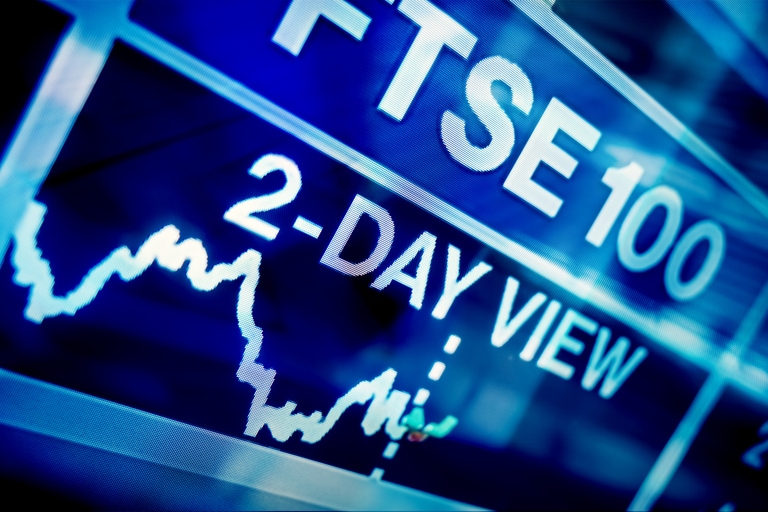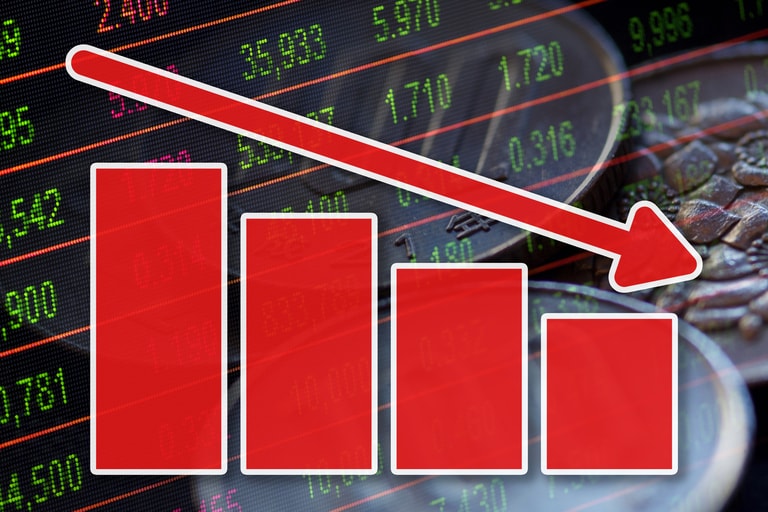While the last few days have been dominated by concerns over the US debt ceiling, which passed its first vote obstacle overnight, yesterday’s declines in equity markets were largely driven by worries over weakness in the Chinese economy.
A slide in commodity prices, most notably copper, iron ore and crude oil was driven by a weaker than expected manufacturing PMI number, as the optimism that characterised the rebound in economic activity in the early part of this year has given way to a realisation that Chinese demand may well remain lacklustre for a while to come. It’s not as if the signs of a weakening Chinese economy haven’t been there, they’ve been apparent in Chinese factory gate inflation which has been stuck in negative territory since October of last year, with the fear that this could well be coming in our general direction.
Yesterday we saw those concerns manifest themselves in some sharp slowdowns in headline PPI, as well as weaker than expected CPI inflation numbers from France, Germany and Italy. This trend may well find itself repeated in today’s flash EU CPI numbers for May, on both headline and core prices. These slowdowns in headline inflation have been largely driven by sharp declines in energy prices over the last few months, in a trend that appears to be being replicated across the board in varying degrees across continents.
Having hit a peak of 10.7% back in October EU headline inflation fell back to 6 9% in March, only to tick higher in April to 7%. The bigger question thus far has been the lack of a reaction, where core prices are concerned and here, they’ve been stickier. Core prices hit a record high of 5.7% in March, and only slipped back to 5.6% in April. If this trend of slowing prices continues it could present a problem for the European Central Bank, with growing splits between hawks and the doves on the governing council as to how many more rate hikes we are likely to see over the next few months.
The chatter from central bank officials has been hawkish of late, with talk of more 50bps rate hikes, although yesterday’s declines in the CPI month-on-month figures have tempered some of that, prompting some euro weakness. If we see similar weakness in today’s EU core CPI numbers, in the same we saw earlier this with Spanish core CPI, then we could well see the euro slide further, as the prospect of further 50bps rate hikes melts away. Expectations are for core prices to slip back to 5.5% from 5.6%, while on the headline number we are expecting to see a slowdown to 6.3% from 7%, and on a month-on-month basis, a rise of 0.2%.
Before the inflation numbers we have the small matter of the final manufacturing PMIs from across Europe. Last week saw the latest flash PMIs show that manufacturing activity in France and Germany remained weak, with manufacturing activity in the German economy deteriorating to the lowest levels since June 2020, when economies were still reeling from the effects of pandemic lockdowns. We also found out that the German economy was in recession after Q1 GDP was revised lower to -0.3%. Italy and Spain economic activity is also expected to see further weakness in manufacturing to 45.8 and 48, when their latest PMIs are released later today.
The UK and US, on the other hand, were able to see a modest pickup in economic activity. It is clear that manufacturing globally is in a difficult place, with yesterday’s weakness in China, as well as copper and iron ore prices, which suggests that global demand is slowing sharply. Moving on to the UK economy, we’ve started to see a modest improvement in mortgage approvals since the start of the year, after they hit a low of 39,600 back in January, as the sharp rise in interest rates at the end of last year weighed on demand for property, as well as house prices.
As energy prices have come down, along with lower rates, demand for mortgages has started to pick up again with March approvals rising to 52,000, while net consumer credit has also started to improve after similar weakness at the end of last year. Assuming the recent spike in core CPI is a one-off, and rates start to come back down again after last week’ s move higher, and inflationary pressures continue to subside we may see this trend of slowing prices continue in the coming months. This of course will depend on energy prices remaining at, or declining from their current levels, and the Bank of England signalling that it is close to being done on raising rates, something that doesn’t look likely at the moment.
On a more positive note, the MPC may well find that the Federal Reserve could come to its rescue on the rate hike front, if it signals it is close to being done when it comes to raising rates, as a dovish Fed could help keep a floor under the pound. On that score, today’s ISM manufacturing report may offer some insight, especially if that weakens in a similar fashion to yesterday’s Chicago PMI and other regional surveys.
EUR/USD – continues to look soft as we head towards the 1.0610 area, and the next key support. We need to see a rebound above 1.0820 to stabilise.
GBP/USD – has found resistance at the 1.2450 area and the 50-day SMA for the second day in a row. Currently finding support around the 1.2300 area with further support at the April lows at 1.2270. A move through 1.2460 is needed to open up the 1.2520 area.
EUR/GBP – looks to be heading back to the December 2022 lows at 0.8558, having slipped below the 0.8620 area. This now becomes resistance with major resistance behind that at the 0.8720 area.
USD/JPY – has slipped back for the third day in a row, after running selling pressure at the 140.90 level earlier this week. Having slipped back below the 139.60 area the risk is for further weakness back towards the 137.00 area, which would delay a potential move towards 142.50 which is the 61.8% retracement of the down move from the recent highs at 151.95 and lows at 127.20.
CMC Markets erbjuder sin tjänst som ”execution only”. Detta material (antingen uttryckt eller inte) är endast för allmän information och tar inte hänsyn till dina personliga omständigheter eller mål. Ingenting i detta material är (eller bör anses vara) finansiella, investeringar eller andra råd som beroende bör läggas på. Inget yttrande i materialet utgör en rekommendation från CMC Markets eller författaren om en viss investering, säkerhet, transaktion eller investeringsstrategi. Detta innehåll har inte skapats i enlighet med de regler som finns för oberoende investeringsrådgivning. Även om vi inte uttryckligen hindras från att handla innan vi har tillhandhållit detta innehåll försöker vi inte dra nytta av det innan det sprids.






